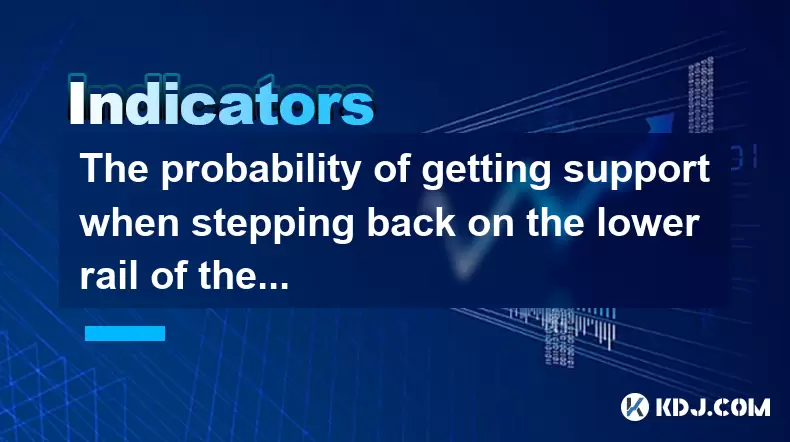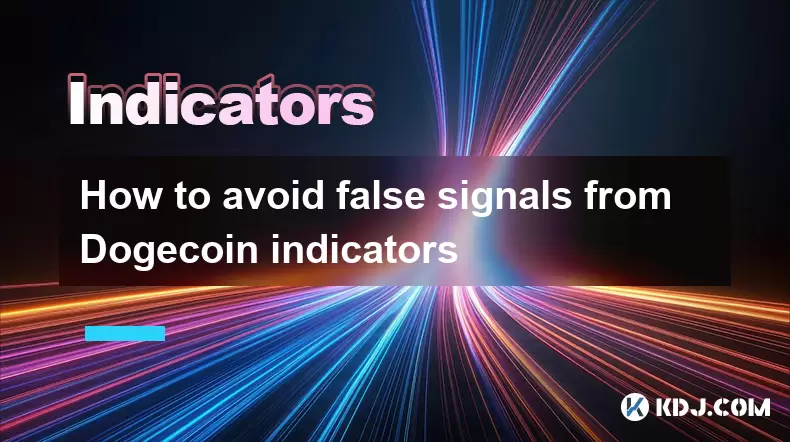-
 Bitcoin
Bitcoin $108,250.0992
0.11% -
 Ethereum
Ethereum $2,515.9404
0.03% -
 Tether USDt
Tether USDt $1.0003
0.00% -
 XRP
XRP $2.2166
-0.19% -
 BNB
BNB $656.5904
0.29% -
 Solana
Solana $147.4122
-0.58% -
 USDC
USDC $1.0000
-0.01% -
 TRON
TRON $0.2830
0.06% -
 Dogecoin
Dogecoin $0.1641
0.27% -
 Cardano
Cardano $0.5739
-0.19% -
 Hyperliquid
Hyperliquid $39.1463
-0.11% -
 Sui
Sui $2.8882
-0.02% -
 Bitcoin Cash
Bitcoin Cash $487.6428
0.31% -
 Chainlink
Chainlink $13.2097
0.07% -
 UNUS SED LEO
UNUS SED LEO $9.0308
0.10% -
 Avalanche
Avalanche $17.8608
0.13% -
 Stellar
Stellar $0.2379
-0.06% -
 Toncoin
Toncoin $2.7400
-0.39% -
 Shiba Inu
Shiba Inu $0.0...01144
-0.36% -
 Litecoin
Litecoin $87.5467
0.66% -
 Hedera
Hedera $0.1538
0.22% -
 Monero
Monero $315.5479
0.36% -
 Dai
Dai $1.0000
0.00% -
 Polkadot
Polkadot $3.3523
-0.71% -
 Ethena USDe
Ethena USDe $1.0003
0.01% -
 Bitget Token
Bitget Token $4.3960
-1.03% -
 Uniswap
Uniswap $7.2663
4.19% -
 Aave
Aave $272.8619
2.04% -
 Pepe
Pepe $0.0...09676
-0.18% -
 Pi
Pi $0.4586
-2.87%
The probability of getting support when stepping back on the lower rail of the rising channel with reduced volume?
Price finds support at the lower rail of a rising channel when approaching with reduced volume, suggesting weakening selling pressure and a potential bullish bounce.
Jul 02, 2025 at 05:36 pm

Understanding the Rising Channel and Its Lower Rail
In technical analysis, a rising channel is formed by drawing two parallel trendlines: one connecting the swing lows (lower rail) and another connecting the swing highs (upper rail). The price action remains confined between these two boundaries. When the price approaches the lower rail of this ascending channel, traders often look for signs of potential support.
The lower rail in a rising channel typically acts as a dynamic support level. This means that as the price moves downward within the channel, it may find temporary support at this boundary. However, not every touch to the lower rail results in a bounce. The context—such as volume, candlestick patterns, and momentum indicators—plays a crucial role in determining whether the price will continue respecting the channel or break out.
The Role of Volume in Confirming Support
Volume is a key factor in confirming the strength of support or resistance levels. In the case of a rising channel, if the price touches the lower rail with reduced volume, it may indicate weak selling pressure. This can be interpreted as a sign that bears are losing control and bulls might soon take over.
- Reduced volume suggests fewer transactions occurring during the decline.
- It implies that the drop in price isn't being driven by strong conviction from sellers.
- This lack of momentum increases the likelihood of a reversal at the lower rail.
However, it's essential to cross-check this observation with other technical tools such as moving averages, RSI, or MACD to confirm whether the support is likely to hold.
Historical Behavior of Price Near the Lower Rail**
Examining historical data reveals that the lower rail of a rising channel often serves as a reliable support zone, especially when the overall trend remains bullish. Traders who understand this behavior may place buy orders near the lower rail, anticipating a bounce back toward the upper rail.
- In many cases, the price bounces off the lower rail multiple times before breaking out.
- A break below the lower rail without strong follow-through could indicate a false breakdown.
- If the price closes below the lower rail with high volume, it could signal a trend reversal.
When the price steps back to the lower rail with reduced volume, the probability of support increases, particularly if the channel has held consistently in previous cycles.
Combining Volume Analysis with Candlestick Patterns**
Candlestick patterns provide valuable insights into market sentiment. When combined with volume analysis, they offer a clearer picture of whether the price is likely to find support at the lower rail.
- A hammer or bullish engulfing pattern forming at the lower rail with low volume indicates strong buying interest.
- These patterns suggest that buyers are stepping in despite the absence of strong selling pressure.
- Conversely, bearish candlesticks like shooting stars or dark cloud covers may suggest rejection even with low volume.
It's important to note that no single indicator guarantees success. Using candlestick patterns alongside volume and trendline analysis improves the accuracy of predicting support reactions.
Practical Steps to Assess the Probability of Support**
To evaluate whether the price will find support at the lower rail of a rising channel with reduced volume, follow these detailed steps:
- Identify the rising channel clearly: Ensure both the upper and lower trendlines are drawn accurately based on at least two contact points each.
- Monitor the approach to the lower rail: Watch how the price behaves as it nears the lower boundary.
- Check the volume profile: Use a volume histogram to observe whether the current move toward the lower rail is accompanied by shrinking volume.
- Look for bullish candlestick formations: A hammer, morning star, or bullish engulfing pattern near the lower rail strengthens the case for support.
- Use oscillators for confirmation: Tools like RSI or Stochastic can show oversold conditions, indicating a potential reversal.
These steps help in building a structured approach to assessing the probability of support without relying solely on intuition.
Frequently Asked Questions (FAQs)
What does reduced volume near the lower rail imply?
Reduced volume near the lower rail implies weakening selling pressure. It suggests that the decline lacks conviction and that buyers may soon step in to push the price higher.
Can the lower rail of a rising channel ever act as resistance?
Yes, if the price breaks below the lower rail convincingly and closes there with strong volume, it may transform into resistance on subsequent rallies.
How many touches are needed to validate a rising channel?
A minimum of two touches on both the upper and lower rails is generally required to consider the channel valid. More touches increase its reliability.
Is it safe to trade a bounce from the lower rail with reduced volume alone?
No, it’s not advisable to trade based solely on volume. Always combine volume analysis with price action and possibly momentum indicators to improve your edge.
Disclaimer:info@kdj.com
The information provided is not trading advice. kdj.com does not assume any responsibility for any investments made based on the information provided in this article. Cryptocurrencies are highly volatile and it is highly recommended that you invest with caution after thorough research!
If you believe that the content used on this website infringes your copyright, please contact us immediately (info@kdj.com) and we will delete it promptly.
- XRP's Upside Potential: Analysts Bullish Despite Accessibility Concerns
- 2025-07-06 10:30:13
- Dubai Hotelier, Crypto Scam, and an Arrest in India: A Tangled Web
- 2025-07-06 10:30:13
- Bitcoin's Calm Before the Storm: ETF Inflows Surge Amidst Low Volatility
- 2025-07-06 10:50:13
- Crypto Capital Inflows: Why Qubetics, Ethereum, and SUI are Investment Coins to Watch
- 2025-07-06 10:50:13
- Bitcoin, Crypto, and Polymarket: Decoding the Crystal Ball
- 2025-07-06 11:15:22
- XRP Price Prediction: Can XRP Break the Weekly Downtrend?
- 2025-07-06 11:00:13
Related knowledge

How to spot manipulation on the Dogecoin chart
Jul 06,2025 at 12:35pm
Understanding the Basics of Chart ManipulationChart manipulation in the cryptocurrency space, particularly with Dogecoin, refers to artificial price movements caused by coordinated trading activities rather than genuine market demand. These manipulations are often executed by large holders (commonly known as whales) or organized groups aiming to mislead...

What is the significance of a Dogecoin engulfing candle pattern
Jul 06,2025 at 06:36am
Understanding the Engulfing Candle Pattern in CryptocurrencyThe engulfing candle pattern is a significant technical analysis tool used by traders to identify potential trend reversals in financial markets, including cryptocurrencies like Dogecoin. This pattern typically consists of two candles: the first one is relatively small and indicates the current...

Dogecoin monthly chart analysis for long term investors
Jul 06,2025 at 10:08am
Understanding the Dogecoin Monthly ChartFor long-term investors, analyzing the monthly chart of Dogecoin (DOGE) provides a macro view of its price behavior over extended periods. The monthly chart captures major trends, key resistance and support levels, and potential reversal zones that are crucial for strategic investment planning. Unlike daily or hou...

How to manage risk using ATR on Dogecoin
Jul 06,2025 at 02:35am
Understanding ATR in Cryptocurrency TradingThe Average True Range (ATR) is a technical indicator used to measure market volatility. Originally developed for commodities, it has found widespread use in cryptocurrency trading due to the high volatility inherent in digital assets like Dogecoin (DOGE). The ATR calculates the average range of price movement ...

How to avoid false signals from Dogecoin indicators
Jul 06,2025 at 06:49am
Understanding Dogecoin Indicators and Their LimitationsDogecoin indicators are tools used by traders to analyze price movements and make informed decisions. These include moving averages, Relative Strength Index (RSI), MACD, and volume-based metrics. However, these tools can sometimes generate false signals, especially in highly volatile markets like Do...

Dogecoin Donchian Channels strategy
Jul 06,2025 at 02:43am
What Are Donchian Channels?Donchian Channels are a technical analysis tool used to identify potential breakouts, trends, and volatility in financial markets. They consist of three lines: the upper band, which marks the highest high over a specific period; the lower band, which reflects the lowest low over the same period; and the middle line, typically ...

How to spot manipulation on the Dogecoin chart
Jul 06,2025 at 12:35pm
Understanding the Basics of Chart ManipulationChart manipulation in the cryptocurrency space, particularly with Dogecoin, refers to artificial price movements caused by coordinated trading activities rather than genuine market demand. These manipulations are often executed by large holders (commonly known as whales) or organized groups aiming to mislead...

What is the significance of a Dogecoin engulfing candle pattern
Jul 06,2025 at 06:36am
Understanding the Engulfing Candle Pattern in CryptocurrencyThe engulfing candle pattern is a significant technical analysis tool used by traders to identify potential trend reversals in financial markets, including cryptocurrencies like Dogecoin. This pattern typically consists of two candles: the first one is relatively small and indicates the current...

Dogecoin monthly chart analysis for long term investors
Jul 06,2025 at 10:08am
Understanding the Dogecoin Monthly ChartFor long-term investors, analyzing the monthly chart of Dogecoin (DOGE) provides a macro view of its price behavior over extended periods. The monthly chart captures major trends, key resistance and support levels, and potential reversal zones that are crucial for strategic investment planning. Unlike daily or hou...

How to manage risk using ATR on Dogecoin
Jul 06,2025 at 02:35am
Understanding ATR in Cryptocurrency TradingThe Average True Range (ATR) is a technical indicator used to measure market volatility. Originally developed for commodities, it has found widespread use in cryptocurrency trading due to the high volatility inherent in digital assets like Dogecoin (DOGE). The ATR calculates the average range of price movement ...

How to avoid false signals from Dogecoin indicators
Jul 06,2025 at 06:49am
Understanding Dogecoin Indicators and Their LimitationsDogecoin indicators are tools used by traders to analyze price movements and make informed decisions. These include moving averages, Relative Strength Index (RSI), MACD, and volume-based metrics. However, these tools can sometimes generate false signals, especially in highly volatile markets like Do...

Dogecoin Donchian Channels strategy
Jul 06,2025 at 02:43am
What Are Donchian Channels?Donchian Channels are a technical analysis tool used to identify potential breakouts, trends, and volatility in financial markets. They consist of three lines: the upper band, which marks the highest high over a specific period; the lower band, which reflects the lowest low over the same period; and the middle line, typically ...
See all articles

























































































